Claude Forthomme's Blog, page 53
September 19, 2012
Baby Boomer Novels: an Explosive New Genre in Book Publishing
Amazon and other publishers take note: Baby Boomer novels, or BB novels, are about to storm the publishing scene! Actually Hollywood has already caught on and has recently been churning out movies clearly aimed at a senior audience, reaping success, most recently with The Best Exotic Marigold Hotel about British retirees cavorting in India, featuring a top-notch cast of veteran actors including Judy Dench and Maggie Smith, both 76. Other noteworthy are RED (ex-Cia agents on the rampage with Bruce Willis and a fantastic Hellen Mirren) and Larry Crowne (a middle-aged Tom Hanks goes back to college after being fired and whizzes around on a vespa with Julie Roberts). The list is long and I'm sure you can add to it your own favorite movie featuring greying heads!

OLD AGE CAN BE FUN, FREE TO DO WHAT YOU WANT...BUT WHAT DO YOU WANT? (Photo credit: roberthuffstutter)
As reported by the media research firm GfK MRI (see Brooks Barnes NYT article, 25/2/2011) the percentage of
American moviegoers in the over 50 population has grown explosively since 1995: up 67 percent by 2010! That means some 45 million people went to the movies that year as opposed to 27 million fifteen years ago. A sea-change!
Aging is no longer something one doesn't talk about except in whispers. On the contrary! The advertising and cosmetics industries are already aware that there's a huge market out there, with the wave of retiring boomers.
But let's go through the facts one by one.
Start with demography, yes, to paraphrase Bill Clinton, "it's the demography, stupid!" The bulge in the population pyramid that was created by the post-WWII surge in births is now entering the third stage in life. The data is clear: as of now, the year of grace 2012, the American population 50 years old and over has hit 100 million. It's a tsunami: each year more than 3.5 million boomers turn 55. And if you're 65, expect to live 19 years more! Ditto for Europe and Japan, the latter with the highest proportion of elderly of any nation today. Even China is facing the issue of a fast-aging population, exacerbated by its one child population policy causing the number of young adults to plummet.
Remember how boomers when they came of age some 45 years ago brought vast changes to the economy and cultural life? We got the civil rights movement, feminism, the greens etc. Monica Williams-Murphy, an emergency physician and author of It’s OK to Die, fully expects them to transform end-of-life care and "seek more control over the dying process", even the creation of a "natural death movement" (see KevinMD.com)
And I fully expect boomers to transform the way we read. Consider: 45 years ago they launched and sustained a new genre YA (or Young Adults) novels. Sure, the concept of fiction focused on the problems of youth and aimed at a young audience had been around for a long time (think of Dickens' Great Expectations). In 1951, Salinger's Catcher in the Rye was published and it was a turning point. In the 1960s YA literature as such came into its own and only grew further in the 1970s to become a top selling genre (until recently - now it seems to be slowing down, but that's another story for another post).
Now boomers are bound to launch and sustain novels that cater to their interests and anxieties. What to do after retirement or rather, how to keep working and start a second life? 25% claim they will never stop working (according to a 2011 Associated Press and LifeGoesStrong.com survey). Other questions include how to meaningfully relate to the young? How to cope with a failing marriage? How to maintain good health (and yes, for many, plastic surgery to maintain a youthful look...) How to face illness and death?
Hence the birth of the BB novel. I've already mentioned in previous posts Deborah Moggach and Louis Begley as leading exponents in this new genre. I'm sure you can think of others and please add them in your comments below!
No doubt my latest novel, A Hook in the Sky, is quintessentially a BB novel. Would you believe it? When I published it, it hit #11 on Kindle's best selling list for the category of...aging! Yes I know, this is weird. But I had a categorizing difficulty here: there's no fiction yet that is classified as "coming-of-old-age" - so to try and find a category in Kindle that zeroes in on senior citizens I had to pick "aging", as of now a non-fiction category. But clearly people looking for serious stuff to investigate the last slice of life must have stumbled on my book...Thank you to all of you who bought it, and let me know what you think of it!
Just in case you think BB novels are reserved for the old and grey among us, well, you're in for a surprise. Just as adults read YA novels, young adults read BB novels. I've had the proof of this at a meeting on Goodreads (held 18 September) with author Deborah Moggach: a 15 year-old told her that her book had given her "an insight to the thoughts and feelings of the older generation in Britain, which I really liked, as it is something you don't usually read, or see in a film these days!"
Indeed, "something you don't usually read or see in a film"... but it is bound to happen more and more often, I'm sure of it.
What is your view? Do you agree that BB novels are a new, fast-rising genre?
Related articles
 Baby boomers 'driving cosmetic surgery increase'
Baby boomers 'driving cosmetic surgery increase'
 Don't hate us because we're baby boomers
Don't hate us because we're baby boomers
 Boomers, Welcome to Your Living Room
Boomers, Welcome to Your Living Room
 The Baby Boomer Grey-Haired Brigade
The Baby Boomer Grey-Haired Brigade
 How baby boomers will change end of life care
How baby boomers will change end of life care




OLD AGE CAN BE FUN, FREE TO DO WHAT YOU WANT...BUT WHAT DO YOU WANT? (Photo credit: roberthuffstutter)
As reported by the media research firm GfK MRI (see Brooks Barnes NYT article, 25/2/2011) the percentage of
American moviegoers in the over 50 population has grown explosively since 1995: up 67 percent by 2010! That means some 45 million people went to the movies that year as opposed to 27 million fifteen years ago. A sea-change!
Aging is no longer something one doesn't talk about except in whispers. On the contrary! The advertising and cosmetics industries are already aware that there's a huge market out there, with the wave of retiring boomers.
But let's go through the facts one by one.
Start with demography, yes, to paraphrase Bill Clinton, "it's the demography, stupid!" The bulge in the population pyramid that was created by the post-WWII surge in births is now entering the third stage in life. The data is clear: as of now, the year of grace 2012, the American population 50 years old and over has hit 100 million. It's a tsunami: each year more than 3.5 million boomers turn 55. And if you're 65, expect to live 19 years more! Ditto for Europe and Japan, the latter with the highest proportion of elderly of any nation today. Even China is facing the issue of a fast-aging population, exacerbated by its one child population policy causing the number of young adults to plummet.
Remember how boomers when they came of age some 45 years ago brought vast changes to the economy and cultural life? We got the civil rights movement, feminism, the greens etc. Monica Williams-Murphy, an emergency physician and author of It’s OK to Die, fully expects them to transform end-of-life care and "seek more control over the dying process", even the creation of a "natural death movement" (see KevinMD.com)
And I fully expect boomers to transform the way we read. Consider: 45 years ago they launched and sustained a new genre YA (or Young Adults) novels. Sure, the concept of fiction focused on the problems of youth and aimed at a young audience had been around for a long time (think of Dickens' Great Expectations). In 1951, Salinger's Catcher in the Rye was published and it was a turning point. In the 1960s YA literature as such came into its own and only grew further in the 1970s to become a top selling genre (until recently - now it seems to be slowing down, but that's another story for another post).
Now boomers are bound to launch and sustain novels that cater to their interests and anxieties. What to do after retirement or rather, how to keep working and start a second life? 25% claim they will never stop working (according to a 2011 Associated Press and LifeGoesStrong.com survey). Other questions include how to meaningfully relate to the young? How to cope with a failing marriage? How to maintain good health (and yes, for many, plastic surgery to maintain a youthful look...) How to face illness and death?
Hence the birth of the BB novel. I've already mentioned in previous posts Deborah Moggach and Louis Begley as leading exponents in this new genre. I'm sure you can think of others and please add them in your comments below!
No doubt my latest novel, A Hook in the Sky, is quintessentially a BB novel. Would you believe it? When I published it, it hit #11 on Kindle's best selling list for the category of...aging! Yes I know, this is weird. But I had a categorizing difficulty here: there's no fiction yet that is classified as "coming-of-old-age" - so to try and find a category in Kindle that zeroes in on senior citizens I had to pick "aging", as of now a non-fiction category. But clearly people looking for serious stuff to investigate the last slice of life must have stumbled on my book...Thank you to all of you who bought it, and let me know what you think of it!
Just in case you think BB novels are reserved for the old and grey among us, well, you're in for a surprise. Just as adults read YA novels, young adults read BB novels. I've had the proof of this at a meeting on Goodreads (held 18 September) with author Deborah Moggach: a 15 year-old told her that her book had given her "an insight to the thoughts and feelings of the older generation in Britain, which I really liked, as it is something you don't usually read, or see in a film these days!"
Indeed, "something you don't usually read or see in a film"... but it is bound to happen more and more often, I'm sure of it.
What is your view? Do you agree that BB novels are a new, fast-rising genre?
Related articles
 Baby boomers 'driving cosmetic surgery increase'
Baby boomers 'driving cosmetic surgery increase' Don't hate us because we're baby boomers
Don't hate us because we're baby boomers Boomers, Welcome to Your Living Room
Boomers, Welcome to Your Living Room The Baby Boomer Grey-Haired Brigade
The Baby Boomer Grey-Haired Brigade How baby boomers will change end of life care
How baby boomers will change end of life care

Published on September 19, 2012 00:32
September 12, 2012
How Amazon Helps You Discover Books
There are three ways in which Amazon supports book discovery: customer reviews, the "like" button similar to the Facebook one and the "tags". Customer reviews have been recently bashed in the blogosphere with several bloggers coming up with evidence of unethical behavior from authors and in some cases a flood of favorable reviews that clearly come from friends or have been paid for. It seems that best-selling author John Locke has admitted to buying 300 reviews...
I won't pronounce myself on all this except to say that we authors really appreciate when a reader leaves a review - it's nice to know there's somebody out there who likes your work enough to make the effort of putting pen on paper! And if there's no time to write a review, hopefully the reader would go back to the book's site on Amazon and click the "like" button!
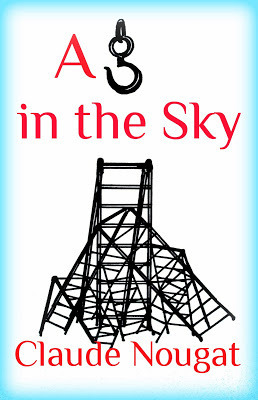
Available on Amazon at a special launch
price for a limited period for
friends, blog readers and
Twitter followers !
But as I recently uploaded two books on Amazon (see cover above and in right margin the Amazon "buy" icons: A HOOK IN THE SKY, a BB novel and TWISTED, Four Tales of Love and Hate - yeah! Victory cry!! They're out!!!), I became almost painfully aware of the third important Amazon tool for book discovery: the tags.
Let me explain. I say "painfully" because tags are words most used in searching for books and they are meant to describe your book's contents and that's no easy or obvious task. For example, A Hook in the Sky, is a love story, but it's much, much more! It's about aging and trying to start a second life after retirement, it's about contemporary art and the place of Art in our lives, it's about a marriage falling apart, it's about a young woman in love with a much older man! Same with Twisted, these are very contemporary, psychological, suspenseful short stories.
Amazon allows you to indicate up to 7 tags when you upload your book to KDP, their publishing platform. But it doesn't stop there. Once your book is up, you can add tags again after the description section, i.e. the 7 tags you've used before when uploading plus others at will. So, in practice, you can have about a dozen of words to describe your book.
This is very useful, since a 68,000 words-plus book (like my Hook) easily needs a dozen words to describe it! But let's consider how the tag system works. Because once you the author have put up the tags you want, others (the readers) are free to add tags of their own and click the ones they think best fit your book (not necessarily all of them, some tags get clicked more than others). So over time, the tags associated with your book evolve, the longer your book is up there on Amazon, the more meaningful the tags become. And since they're the result of contributions from readers and turn up automatically in Amazon's computers, presumably tags can't be gamed.
Some authors try to get their friends to click on tags in the (probably mistaken) idea that this can change something and kick your book up in the classification...But what classification? This has nothing to do with ranking; it's meant as a book discovery searching system to try and help readers zero in on desired content (there's a box to search products by tags). It's difficult to see how it can be gamed and I sincerely hope it's not! If you know of any instances where the tags have been somehow subverted, please tell us in the comments!
Amazon also helps you when you tag by showing you a cloud of tags, with the most popular ones in bold letters and bigger than the others. Currently the most popular tags on Amazon suggest that the following types of books are most sought after:
1. highest ranking (more recently used): adventure, comedy, fantasy fiction, Kindle freebie, paranormal romance, romance, science fiction, suspense, thriller
2. second highest : action, children's books, christianity, historical fiction, history, horror, humor, mystery, erotic romance, erotica (here's the 50 Shades effect!), romantic suspense, vampire, inspirational
3. third highest (and less recently used): Christian fiction, family, love, magic, contemporary romance, historical romance, vampire romance, romantic suspense, young adult
Much further down you get things like contemporary fiction, post-apocalyptic, urban fantasy or World War II.
Obviously such a cloud is subject to daily change and fluctuations, but the very tags chosen by people in their searches are interesting and suggest that changes are afoot in readers' preferences. For example, it is surprising how Young Adult and vampire romance have lost ground or how erotic romance and erotica are not quite as high as you might expect given the incredible success of 50 Shades of Grey with over 12,000 customer reviews and over 2,000 likes!
Overall, the impression is that people who read fiction are looking to be entertained above all else. I can't blame them, that's my case too! Fiction is for fun - it can make you cry or laugh but it should never be boring! Certainly when I write that's what I strive for. And whenever I find that my first draft bores me, it goes in the trash can and I write something else!
What do you look for in a book?
Interesting blogs related to this topic:
 It's a Dirty Job... (Guest Post by Kasia James)
It's a Dirty Job... (Guest Post by Kasia James)
 Why I never (almost) do book reviews anymore.
Why I never (almost) do book reviews anymore.
 5 Ways to Spot a Trustworthy Amazon Review
5 Ways to Spot a Trustworthy Amazon Review
 Unethical Scumbags
Unethical Scumbags
 What Romance Readers Want (a Guess by Stephanie Queen)
What Romance Readers Want (a Guess by Stephanie Queen)



I won't pronounce myself on all this except to say that we authors really appreciate when a reader leaves a review - it's nice to know there's somebody out there who likes your work enough to make the effort of putting pen on paper! And if there's no time to write a review, hopefully the reader would go back to the book's site on Amazon and click the "like" button!

Available on Amazon at a special launch
price for a limited period for
friends, blog readers and
Twitter followers !
But as I recently uploaded two books on Amazon (see cover above and in right margin the Amazon "buy" icons: A HOOK IN THE SKY, a BB novel and TWISTED, Four Tales of Love and Hate - yeah! Victory cry!! They're out!!!), I became almost painfully aware of the third important Amazon tool for book discovery: the tags.
Let me explain. I say "painfully" because tags are words most used in searching for books and they are meant to describe your book's contents and that's no easy or obvious task. For example, A Hook in the Sky, is a love story, but it's much, much more! It's about aging and trying to start a second life after retirement, it's about contemporary art and the place of Art in our lives, it's about a marriage falling apart, it's about a young woman in love with a much older man! Same with Twisted, these are very contemporary, psychological, suspenseful short stories.
Amazon allows you to indicate up to 7 tags when you upload your book to KDP, their publishing platform. But it doesn't stop there. Once your book is up, you can add tags again after the description section, i.e. the 7 tags you've used before when uploading plus others at will. So, in practice, you can have about a dozen of words to describe your book.
This is very useful, since a 68,000 words-plus book (like my Hook) easily needs a dozen words to describe it! But let's consider how the tag system works. Because once you the author have put up the tags you want, others (the readers) are free to add tags of their own and click the ones they think best fit your book (not necessarily all of them, some tags get clicked more than others). So over time, the tags associated with your book evolve, the longer your book is up there on Amazon, the more meaningful the tags become. And since they're the result of contributions from readers and turn up automatically in Amazon's computers, presumably tags can't be gamed.
Some authors try to get their friends to click on tags in the (probably mistaken) idea that this can change something and kick your book up in the classification...But what classification? This has nothing to do with ranking; it's meant as a book discovery searching system to try and help readers zero in on desired content (there's a box to search products by tags). It's difficult to see how it can be gamed and I sincerely hope it's not! If you know of any instances where the tags have been somehow subverted, please tell us in the comments!
Amazon also helps you when you tag by showing you a cloud of tags, with the most popular ones in bold letters and bigger than the others. Currently the most popular tags on Amazon suggest that the following types of books are most sought after:
1. highest ranking (more recently used): adventure, comedy, fantasy fiction, Kindle freebie, paranormal romance, romance, science fiction, suspense, thriller
2. second highest : action, children's books, christianity, historical fiction, history, horror, humor, mystery, erotic romance, erotica (here's the 50 Shades effect!), romantic suspense, vampire, inspirational
3. third highest (and less recently used): Christian fiction, family, love, magic, contemporary romance, historical romance, vampire romance, romantic suspense, young adult
Much further down you get things like contemporary fiction, post-apocalyptic, urban fantasy or World War II.
Obviously such a cloud is subject to daily change and fluctuations, but the very tags chosen by people in their searches are interesting and suggest that changes are afoot in readers' preferences. For example, it is surprising how Young Adult and vampire romance have lost ground or how erotic romance and erotica are not quite as high as you might expect given the incredible success of 50 Shades of Grey with over 12,000 customer reviews and over 2,000 likes!
Overall, the impression is that people who read fiction are looking to be entertained above all else. I can't blame them, that's my case too! Fiction is for fun - it can make you cry or laugh but it should never be boring! Certainly when I write that's what I strive for. And whenever I find that my first draft bores me, it goes in the trash can and I write something else!
What do you look for in a book?
Interesting blogs related to this topic:
 It's a Dirty Job... (Guest Post by Kasia James)
It's a Dirty Job... (Guest Post by Kasia James) Why I never (almost) do book reviews anymore.
Why I never (almost) do book reviews anymore. 5 Ways to Spot a Trustworthy Amazon Review
5 Ways to Spot a Trustworthy Amazon Review Unethical Scumbags
Unethical Scumbags What Romance Readers Want (a Guess by Stephanie Queen)
What Romance Readers Want (a Guess by Stephanie Queen)

Published on September 12, 2012 03:34
September 5, 2012
Book Cover Survey Results: The Way Forward!
Book covers are the doors to your books, all writers know that and worry about them. The rules for good book cover design are quite simple:
(1) reflect the genre or mood of the book, and for digital books especially,
(2) no clutter
(3) big, legible fonts that can be read even when the cover is the size of a postage stamp on your Kindle.
That's all.
Simple? No, I got myself into quite a funk trying to figure out which cover would be better for my next novel A HOOK IN THE SKY: a hook (in the sky of course) or a female nude (my aged protag's young lover)?
Readers of my blog know I ran a poll last week. My Twitter followers also know that a friend who runs the immensely useful site listing every day "The Best Free Kindle Books" (the "list that Amazon does not give to the Book Lover") also set up a poll presenting both my covers, plus a useful answer I had forgotten to include in my own poll: "neither" giving you the chance to answer in case you didn't like either covers. Let me take the opportunity here to warmly thank everyone who voted, that was a big help!
Results of the polls? Very interesting! On my blog, 58% of voters went for the nude - but the sample is very small, just 31 votes, so not very reliable. On The Best Free Kindle Books site, the poll was far more consistent: 122 votes, divided like this (on 4 September, when the poll was taken down after 2 days):
The Hook: 50.9%
The Nude: 23,2%
Neither: 25,9%
A quarter of the voters liked neither! Indeed, the nude (that had done so well on my blog) was losing out! Hey, nobody likes naked women? Just kidding!
Clearly, I needed to think up a new cover and I had to take all this into account. I turned to the comments and while I'm not going to go through all of them here - but I do want to thank all of you for making comments, it was truly most helpful! - I'd like to zero in on a particular one that seemed to reflect many others. Author Joseph Badal, whose judgment I respect, told me he liked neither cover but he said: "I liked what you wrote about Robert and the ladders. That's what I would put on the cover."
Robert (that's my protag, a cosmopolitan Frenchman who retires from the UN) certainly has a thing about ladders. Indeed, "A Hook in the Sky" is the name he gave to his art installation, a jumble of ladders reaching up to a hook. He came up with that wild idea in the hope of winning back his wife, a chic Manhattan socialite who runs a successful contemporary art gallery in Chelsea. Because, until the moment he dreamt up his Hook installation, the marriage was on the verge of collapse. It seemed that all he did with his wife was fight over art - when in fact they were fighting over their relationship. His wife loves the idea, she sees it as a symbol of the human search for something higher in life, something you reach for and can never quite grab (the hook is too far above the topmost ladder)...Will this be enough to save their marriage?
Ok, a jumble of ladders and a hook. Here's what I came up with:

Now of course, the title fonts need to be added, A HOOK IN THE SKY in the upper part, my name at the bottom. But do you like the illustration? I'd love to know what you think! Here's a quick poll to give your opinion:
How does the ladders and hook illustration strike you as a book cover?
Yes it works
No, it doesn't work at all
Good idea but it needs a different design
Terrible idea, I preferred the hook over a landscape
Terrible idea, I preferred the naked woman
pollcode.com free polls
If you have a minute, please leave a comment and let me know what you really think...I am very grateful for all responses, including those telling me you hate it!
Related articles
 19 Beautiful book cover designs for your inspiration
19 Beautiful book cover designs for your inspiration
 FEATURE: The Freakiest Zombie Book Covers
FEATURE: The Freakiest Zombie Book Covers
 Why Hire A Professional To Design Your Book Cover?
Why Hire A Professional To Design Your Book Cover?
 Book Covers
Book Covers



(1) reflect the genre or mood of the book, and for digital books especially,
(2) no clutter
(3) big, legible fonts that can be read even when the cover is the size of a postage stamp on your Kindle.
That's all.
Simple? No, I got myself into quite a funk trying to figure out which cover would be better for my next novel A HOOK IN THE SKY: a hook (in the sky of course) or a female nude (my aged protag's young lover)?
Readers of my blog know I ran a poll last week. My Twitter followers also know that a friend who runs the immensely useful site listing every day "The Best Free Kindle Books" (the "list that Amazon does not give to the Book Lover") also set up a poll presenting both my covers, plus a useful answer I had forgotten to include in my own poll: "neither" giving you the chance to answer in case you didn't like either covers. Let me take the opportunity here to warmly thank everyone who voted, that was a big help!
Results of the polls? Very interesting! On my blog, 58% of voters went for the nude - but the sample is very small, just 31 votes, so not very reliable. On The Best Free Kindle Books site, the poll was far more consistent: 122 votes, divided like this (on 4 September, when the poll was taken down after 2 days):
The Hook: 50.9%
The Nude: 23,2%
Neither: 25,9%
A quarter of the voters liked neither! Indeed, the nude (that had done so well on my blog) was losing out! Hey, nobody likes naked women? Just kidding!
Clearly, I needed to think up a new cover and I had to take all this into account. I turned to the comments and while I'm not going to go through all of them here - but I do want to thank all of you for making comments, it was truly most helpful! - I'd like to zero in on a particular one that seemed to reflect many others. Author Joseph Badal, whose judgment I respect, told me he liked neither cover but he said: "I liked what you wrote about Robert and the ladders. That's what I would put on the cover."
Robert (that's my protag, a cosmopolitan Frenchman who retires from the UN) certainly has a thing about ladders. Indeed, "A Hook in the Sky" is the name he gave to his art installation, a jumble of ladders reaching up to a hook. He came up with that wild idea in the hope of winning back his wife, a chic Manhattan socialite who runs a successful contemporary art gallery in Chelsea. Because, until the moment he dreamt up his Hook installation, the marriage was on the verge of collapse. It seemed that all he did with his wife was fight over art - when in fact they were fighting over their relationship. His wife loves the idea, she sees it as a symbol of the human search for something higher in life, something you reach for and can never quite grab (the hook is too far above the topmost ladder)...Will this be enough to save their marriage?
Ok, a jumble of ladders and a hook. Here's what I came up with:

Now of course, the title fonts need to be added, A HOOK IN THE SKY in the upper part, my name at the bottom. But do you like the illustration? I'd love to know what you think! Here's a quick poll to give your opinion:
How does the ladders and hook illustration strike you as a book cover?
Yes it works
No, it doesn't work at all
Good idea but it needs a different design
Terrible idea, I preferred the hook over a landscape
Terrible idea, I preferred the naked woman
pollcode.com free polls
If you have a minute, please leave a comment and let me know what you really think...I am very grateful for all responses, including those telling me you hate it!
Related articles
 19 Beautiful book cover designs for your inspiration
19 Beautiful book cover designs for your inspiration FEATURE: The Freakiest Zombie Book Covers
FEATURE: The Freakiest Zombie Book Covers Why Hire A Professional To Design Your Book Cover?
Why Hire A Professional To Design Your Book Cover? Book Covers
Book Covers

Published on September 05, 2012 07:27
August 27, 2012
Book Cover Blues: Which is Best?
I posted about book covers last week and how to ensure your book cover is a winning one, bringing you lots and lots of sales....At the end of the post, I uploaded a cover done by a talented designer ABSV, on the basis of one of my paintings. It's a great cover but somehow doesn't fit the book's genre or content. Looks too erotic, steamy and sexy. Here it is for those of you who haven't seen it:
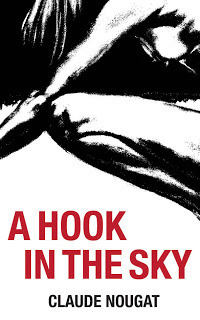
Some people said my name tag was too small, that the type of letters suggested a mystery thriller while the illustration, rather artsy, was still too erotic for what is basically a contemporary novel about Robert, a Baby Boomer and an attractive Frenchman who faces a collapsing marriage when he retires from a successful career in the United Nations. He tries to build a second life as an artist but his conventional paintings irritate his much younger American wife, a wealthy New York socialite who runs a chic contemporary art gallery in Chelsea.They fight over art but what is at stake is their relationship. They separate, he moves to Italy, has a show in Paris and soon sexual adventures complicate his life. Can their marriage survive?
Now, I've mulled over the question, going through dreadful pains and self-questioning, and finally come up with a new cover (still based on one of my own sketches - done for the purpose). Here it is:
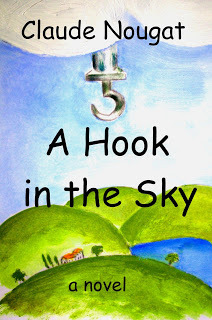
The landscape is a simplified rendering of Umbria, the lake of Trasimeno and the house where the protagonist retreats while his marriage collapses. The hook? Read the book! ...when it comes out next week (will let you know, promise). But I'll give you a hint: the title is the one Robert uses for a weird contemporary art installation he's dreamt up to try and win back his wife. It's a pile of aluminum ladders reaching up to a hook set high above so that it cannot be grabbed even if you stand on top of the tallest ladder, a fitting symbol of the human condition and our desire for transcendance!
Which one do you like best? Here's a poll - please vote and let me know which I should use! Please keep in mind the genre of the book when you assess the covers and do make comments, everyone's opinion is most welcome and most useful!
Which cover do you like best
The one with the nude
The one with the hook
pollcode.com free polls
Related articles
 Book cover troubles and solutions
Book cover troubles and solutions
 Judging a book by it's cover
Judging a book by it's cover
 Three Cover Design Secrets for Drawing in Readers
Three Cover Design Secrets for Drawing in Readers




Some people said my name tag was too small, that the type of letters suggested a mystery thriller while the illustration, rather artsy, was still too erotic for what is basically a contemporary novel about Robert, a Baby Boomer and an attractive Frenchman who faces a collapsing marriage when he retires from a successful career in the United Nations. He tries to build a second life as an artist but his conventional paintings irritate his much younger American wife, a wealthy New York socialite who runs a chic contemporary art gallery in Chelsea.They fight over art but what is at stake is their relationship. They separate, he moves to Italy, has a show in Paris and soon sexual adventures complicate his life. Can their marriage survive?
Now, I've mulled over the question, going through dreadful pains and self-questioning, and finally come up with a new cover (still based on one of my own sketches - done for the purpose). Here it is:

The landscape is a simplified rendering of Umbria, the lake of Trasimeno and the house where the protagonist retreats while his marriage collapses. The hook? Read the book! ...when it comes out next week (will let you know, promise). But I'll give you a hint: the title is the one Robert uses for a weird contemporary art installation he's dreamt up to try and win back his wife. It's a pile of aluminum ladders reaching up to a hook set high above so that it cannot be grabbed even if you stand on top of the tallest ladder, a fitting symbol of the human condition and our desire for transcendance!
Which one do you like best? Here's a poll - please vote and let me know which I should use! Please keep in mind the genre of the book when you assess the covers and do make comments, everyone's opinion is most welcome and most useful!
Which cover do you like best
The one with the nude
The one with the hook
pollcode.com free polls
Related articles
 Book cover troubles and solutions
Book cover troubles and solutions Judging a book by it's cover
Judging a book by it's cover Three Cover Design Secrets for Drawing in Readers
Three Cover Design Secrets for Drawing in Readers

Published on August 27, 2012 06:02
August 22, 2012
Three Tips to Ensure a Winning Book Cover
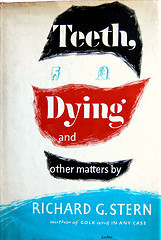
Book cover design by George Salter (Photo credit: Crossett Library Bennington College)
Independent authors are often accused of unprofessional book covers...As an indie, how can you make sure your book covers look professional? That's important because the cover is a first, fast visual signal to your readers that you have produced a high quality book.
A good cover says "trust me, this is a good read!"
Indies do not have the advantage of published authors. That's one of the strong points for going traditional and getting your book published by one of the Big Six - though many trad-pubbed authors complain that they are presented with book covers that "suck" and that there's nothing they can do to change them...
What are the options? Get a good designer to do your cover of course. If in addition to being a writer you're also a visual artist (like me, I'm a painter too), the temptation is strong to do your own cover. Until you get really good with photo shop and fonts, resist it! Typography is a world unto its own and you can't learn it overnight. Consider the simple act of positioning titles on the cover: it's an art and that means you can't learn it overnight either.
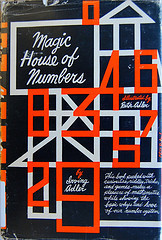
Book cover designed by Cliff Roberts (Photo credit: Crossett Library Bennington College)
But don't despair! It's possible to develop some criteria to decide whether a book cover is good or not. After all, the designer you paid for may have produced a rotten cover and you need to be able to see that and fire him!
There are several points to keep in mind, considering though that, bottom line, it's inevitably a matter of personal taste. On my Pinterest site, I've collected a number of book covers that I happen to think are very successful but maybe you won't (as I said, tastes vary, de gustibus non disputandum...). You'll see, there are classics and also new titles from major authors coming out this fall - all traditionally published. Take a look, here's the link, and come back, I'm waiting for you with my tips for a winning book cover.
TIP # 1: Don't clutter it! It has to be visually "easy to read", both the book title and your author name.
This is especially important in our digital age: Amazon (and other e-platforms) present book covers in stamp size, so the design has to shine through even in a minute size and in black and white (a lot of people are still reading on old-fashioned electronic ink e-readers like the Kindle - yes, it's become old fashioned!)
TIP #2: Pick a striking image related to what your book is about. This is by far the trickest part, and much depends on (1) your own taste, and (2) the book's genre. Steamy sex will be fine with suggestive parts of entwined naked bodies, chick lit or MG won't. Make sure your cover is in line with the market for your book, you don't want to disappoint your readers, much less mislead them! In short, the cover has to be in line with both the tone and content of your book.
If you can, go for the symbolic. That seems to be very much in fashion these days, go take another look at my Pinterest site: see how geometric and simple lines and primary colors (a lot of red, a lot of yellow) are used to great effect? Yet, they are not random lines or colors chosen because they're striking (though they are that to be sure).The point is they all contribute to build up a message which hints at what's coming in the book.
TIP #3: Make sure your image is unexpected and engages the reader. Obviously it has to be appealing, attractive. This is by far the hardest to come up with. However I must insist on the term "unexpected". That's crucial. A title may evoke an obvious symbolic image, but better stay away from the obvious. Try and think of something that is closely related but not so obvious. That will attract attention (the obvious is blah...)
Yes, I know, easier said than done!
I certainly found myself struggling to come up with good covers. For my FEAR OF THE PAST, I thought a lion head would be a nice symbol of the book's content: after all it's a family saga set in Sicily - the collapse of a once powerful family. Lions, as everyone knows, are the Kings of the Jungle. Plus I picked a Sicilian lion head, nicely hieratic the way they used to do them in Sicilian coat-of-arms and palaces. Yes, but...the trouble is, that's not really the main point of the book at all! It's all about how the last descendant, a brilliant American video game engineer, manages to revive the family fortunes. It's a story of collapse and revival - nothing to do with a lion! So that's a cover that would need redoing, no question about it and I'm working on it. Actually the whole book really needs a new title as well and I'm working on that too! And once the title is changed, the whole book needs to be revised - am working on that as well, wow! I will keep you posted as soon as I've solved my problems on this one!
Then, for the cover of my forthcoming novel A HOOK IN THE SKY, I ran into the difficulty of picking an image for the book cover that was both unexpected and engaging. The expected would be to put a big hook in a blue sky among white clouds. Something like this (ok, this is not blue but romantic seppia):
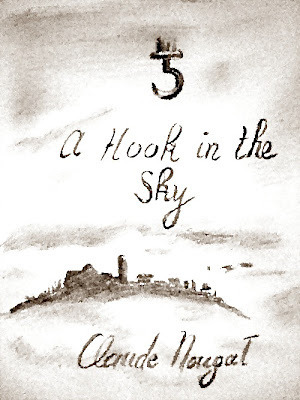
Easy and nicely symbolic but blah...Since the protagonist (who's a retiree), in his attempts to build a second life for himself, has a few memorable sexual adventures, I thought that a naked woman would be a good idea for the cover and that I could use one of my own paintings. Here it is:
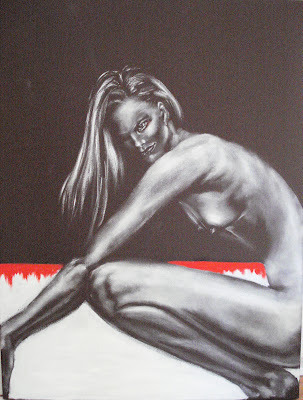
I asked a friend who happens to be a hugely talented designer to come up with a cover (the name of her firm: ASBV). First she cropped the image and took away the dripping red line. Then she picked highly visual block lettering and put the red color back in. This is the result:
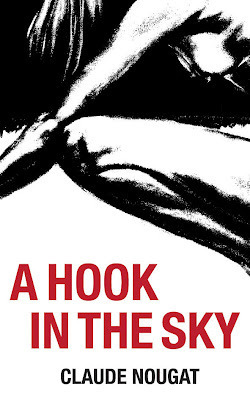
How do you like it? Please tell me what you think. I believe it's a very effective cover but is it too steamy? Please note the book is NOT erotica, it's contemporary fiction focused one how one Baby Boomer, upon retiring, tries to juggle his new life as his 20-year marriage collapses and (of course) he has some sexual adventures, including one very sexy young girl...
Now you may well ask, where's the hook in all this? She's a hooker? Yes, in a way, she is. She also happens to be crouching, her body's in the shape of a hook. Is that enough to entice readers or will it mislead them?
Please let me know what you think! I value your opinions...
Related articles:
For great advice, go to: http://chazzwrites.com/2012/08/18/book-cover-troubles-and-solutions/
 Judging a book by it's cover
Judging a book by it's cover Three Cover Design Secrets for Drawing in Readers
Three Cover Design Secrets for Drawing in Readers Yes, I judge a book by its cover
Yes, I judge a book by its cover Book Covers: One of the Most Important Marketing Tools You'll Ever Use
Book Covers: One of the Most Important Marketing Tools You'll Ever Use Book covers
Book covers

Published on August 22, 2012 03:04
August 15, 2012
One of Amazon's Best Marketing Tool Revealed: the Vine Program

Amazon-New-Detail-Page (Photo credit: kokogiak)
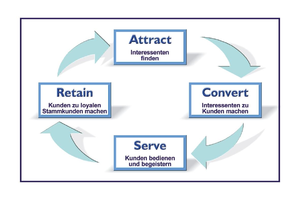
Der Loyalitätskreislauf (Marketing, E-Marketing) (Photo credit: Wikipedia)
Amazon's Vine Program is a truly amazing marketing tool and perhaps it works so well because it is (relatively) discreet. It's simply brilliant: it takes advantage of our human compulsion to compete - we all love to come out first! - and of our distrust of traditional paid advertising. It harnesses the power of independent customer reviews and unashamedly turns it to its own advantage - but then, why shouldn't it? Amazon has thought it out and fine-tuned it, so why not reap the benefits? I can't think of any other online vendor who has constructed such a sophisticated marketing tool.
So what's it about? Amazon's own presentation of the Vine Program is not easy to find in the site and it turns up in relation to reviews made by people who participate in the program. Under their name when they review a product - and it can be anything from an electronic gadget to a book - appears in blue letters a little sign which reads "Vine™ Voice" plus sometimes an explanation which says Customer review from the Amazon Vine™ Program. That's where you get a chance to click on a "what's this" box that will take you to a full explanation. Here's the link: http://www.amazon.com/gp/vine/help
Take a look and then come back, I'm waiting for you, I've got more on this. You'll learn that this is a program you can't join unless you've first earned a high ranking as a reviewer - yes, this is where the competition comes in! To review for Amazon is fun (and a competitive activity!) and they actually encourage you to review the products you've bought. Also the Vine Program is by invitation only - meaning Amazon invites you on the basis of your ranking which is determined by what other people think of your reviews. Have you noticed that little sentence above reviews which says "x number of y people have found the following review helpful"? Indeed, you're encouraged to click to indicate whether you agree with the review. Just take a look, you'll see a lot of people do that sort of clicking.
Of course, Amazon is not naive and is well aware that some people may game the system and get their friends to click approval of their reviews. So they take that into account through some sort of algorithm that levels the playing field. How that's done I don't know, they won't say but I'm quite sure it works - also to improve your ranking, you'd have to obtain "votes of approval" for your reviews from thousands of "friends", something that's obviously impossible. I believe it is fair to say that the Vine Program has only "trusted" reviewers - which is of course the Amazon goal for the program.
A Vine Program reviewer doesn't make money being a reviewer, he simply earns "badges". There are all sorts of badges: for belonging to the top 1000 reviewers, top 500, top 100, top 50, top 10, for being the first. Yes, it's highly competitive! And you can even earn a badge which reads "real name" and is put under your reviewer's name (I'm not quite sure why but it does sound positive). So what Amazon does with all these badges is - yes, you guessed it - encourage competition. Keep it up, you guys!
But there is a small material advantage in belonging to the Vine Program: they get for free the products they review and for books that means ARCs (Advanced Review Copies). So they're not like the rest of us who whenever we review a product we buy it first and then earn a "Amazon Verified Purchase" button next to our review. They don't because Amazon sends them the products obtained from the publishers, labels, studios, manufacturers or any vendor participating in the program. But they're not obliged to publish positive reviews, they can write whatever they want. This is something that Amazon insists on, they are left entirely free to evaluate the products as they wish. I checked a few out and yes, I can vouch that they actually do. A Vine Program reviewer is just as likely as anyone else to produce a negative review, but since they've earned so much trust from other customers, it is obvious that their reviews carry more weight.
What is perhaps a little strange is that the reviews from Vine Program members aren't necessarily longer or more in-depth than the average. Indeed, they can be as short as a couple of sentences that "skim the surface" of the product - that is especially true for books. I noticed some really shallow 5 star reviews for books that deserved better coverage (I won't name names, but I assure you they exist). But then, I noticed these particular Vine™ Voices weren't specialized in reviewing books. Looking at their profile, I found they reviewed all sorts of other things from electronic gadgets to pick up bags for dog poop. Presumably they weren't avid book readers, but overall, they had gained enough support from fellow customers to join the ranks of the Vine Program.
Indeed, Amazon tries to enroll in the program reviewers that are popular - and of course, over time, reviewers tend to achieve a status of "near-specialist" because of their knowledge and continued interest in certain types of products. On a side note: reviewers that achieve high rankings are not necessarily book reviewers, on the contrary. For example, the last time I looked, among the top ten program reviewers only one was specialized in reviewing books!
However that's not what makes it such a marvelous marketing tool. The real beauty is that Amazon can schedule the customer reviews: some reviews come out in the pre-launching period of a product and for books in particular, this is very important. For example, Paul Auster is coming out on 21 August with a new book published by Henry Holt and Company, Winter Journal. At the time of writing (15 August), it has already obtained 17 reviews, all of them Vine™ Voices.

Paul Auster. (Photo credit: Wikipedia)
Now, of course Paul Auster is the kind of author who automatically gets good editorial reviews from the likes of Booklist, Publishers'Weekly, Kirkus, Library Journal. So what is the effect of Vine reviews compared to the industry standards? Hard to say, but some of those Vine™ Voices have a large following. They are people who have done upwards of two to three thousand reviews. Three were classified in the "top 500 reviewers" and one in the top one thousand. What does it mean? Well, take one reviewer who's ranked 121 - he has garnered 6159 "helpful votes". His reviews have been read by many more people of course, but that number was sufficiently impressed to click the helpful vote button. Not bad...Multiply that by 16, and you get a nice core of some 100,000 people who have manifested interest, and all of that even before the book comes out! Consider also that the reviews were nicely varied, from 5 to 2 stars. Yes, even one 2 star review and pretty damning too, saying "Sorry, this just didn't work for me. It was boring and embarrassing to read". But there was no one star review. This leaves the overall average at a good, rounded 4 star level - which adds to the feeling of trust. This looks (and I'm quite sure it is) very genuine, free of any undue pressure.
Also, in the fragile, initial period, sales of a product can be sustained with a trickle of reviews from the Vine Program or if sales flag, they can be boosted. It is interesting to see how the reviews from Vine™ Voices pop up at fairly regular intervals to sustain the book sales of Amazon imprints, ensuring that they don't gather dust on their digital shelves.
Yes, if you're published by an Amazon imprint, whether Thomas Mercer (mysteries), AmazonEncore (out of print and self-published), AmazonCrossing (translated books),Montlake Romance or 47 North (sci-fi, fantasy, horror), you are supported by the impressive Amazon online marketing toolkit, including the little known but incredibly effective Vine Program. This is a book promotion tool traditional publishers are probaly drooling over...But they can use Amazon's marketing toolkit to their advantage too, right? That's certain what Henry Holt has done!
Related articles
 Is Amazon Getting too Big for its Britches?
Is Amazon Getting too Big for its Britches? Make Amazon Your Personal Publicist Using Their Book Category System
Make Amazon Your Personal Publicist Using Their Book Category System 10 things Amazon won't tell you
10 things Amazon won't tell you 5 Surprising Ways to Use Amazon to Further Your Content Marketing Goals
5 Surprising Ways to Use Amazon to Further Your Content Marketing Goals Pros and Cons of the KDP Select Program
Pros and Cons of the KDP Select Program STUDY: Most Product Reviews On Amazon Are Crap
STUDY: Most Product Reviews On Amazon Are Crap

Published on August 15, 2012 00:21
August 8, 2012
Participate in an Italian Art Competition, the "Premio Celeste", Open to the Whole World!
You don't need to be Italian to participate in this art competition and you don't need to be a painter either, you can be a sculptor, a photographer, anything you like provided it's contemporary! I happen to be a figurative painter (besides being a writer of course) and I've just decided to participate with one of my oil paintings.
Here it is, it's called OVER THE EDGE:

Cool, isn't it? Especially in this hot weather...all that nice fluffy snow! I've just finished writing a novella by that title and I plan to use this painting for the book cover (when I get around to publishing it!) What do you think of it? If you're holding your breath and wondering how this guy is going to land, well, I'm wondering too! Actually, that's the whole point of the painting...
And yes, the novella OVER THE EDGE, is full of suspense too, it's set in the future, two hundred years from now, when medical advances have solved the problem of aging and you live your whole life looking young until the moment you drop dead...But is that a blessing when the man you love doesn't know how old you are? And here in this painting is the man she loves, a young athletic skier engaged in a magnificent jump while she is...122 years old and just a few hours from Death!
Here's the link to the Premio Celeste - if you want to participate, hurry up, inscriptions will be closed by midnight tonight!
Condividi il tuo lavoro - Premio Celeste



Here it is, it's called OVER THE EDGE:

Cool, isn't it? Especially in this hot weather...all that nice fluffy snow! I've just finished writing a novella by that title and I plan to use this painting for the book cover (when I get around to publishing it!) What do you think of it? If you're holding your breath and wondering how this guy is going to land, well, I'm wondering too! Actually, that's the whole point of the painting...
And yes, the novella OVER THE EDGE, is full of suspense too, it's set in the future, two hundred years from now, when medical advances have solved the problem of aging and you live your whole life looking young until the moment you drop dead...But is that a blessing when the man you love doesn't know how old you are? And here in this painting is the man she loves, a young athletic skier engaged in a magnificent jump while she is...122 years old and just a few hours from Death!
Here's the link to the Premio Celeste - if you want to participate, hurry up, inscriptions will be closed by midnight tonight!
Condividi il tuo lavoro - Premio Celeste


Published on August 08, 2012 06:45
August 1, 2012
Are Amazon Rankings Killing Your Book Sales?
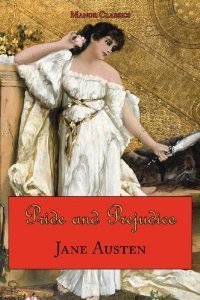
Cover of Jane Austen's Pride and Prejudice
There are nearly one million and a half titles on Kindle: if you're beyond the 100,000th rank, could that fact alone discourage would-be readers? I think so, though I can't prove it. But one thing can be done: investigate what the concept of rankings really mean, starting on well-known books of proven quality, whether literary or genre, classic or contemporary. Took me a whole day, and I only looked at some 25 writers - a sample too small to go beyond anything but impressionistic preliminary conclusions * - and all my numbers hark back to 28 July when I did my research in the Kindle Store (rankings change on a daily basis of course). I'm sure some of you have done it too and you could contribute to my investigation, please be sure to include your observations in the comments, I'm looking forward to them!
Thus my conclusions need to be taken with a grain of salt, but they're interesting all the same and some of the results were truly surprising.
In a nutshell:
1. Amazon rankings do NOT reflect book quality. Classic authors are easily outranked by nobodies. A few examples will suffice: do you know where Tolstoy's celebrated Anna Karenina is ranked in "paid-in" Kindle Store ("paid in" as opposed to books available"free")? It's sitting at #2,746! Of course, the fact that it's also available free doesn't help...Hopefully this abysmal ranking will be improved by the coming Joe Wright movie (look at the trailer below, amazing! And Tom Stoppard did the screenplay too, wow!). But Tolstoy is not an isolated case. Jane Austen's Pride and Prejudice is even worse off, at #3,665, even though the Kindle world is reputed to be the province of Romance books, and Regency Romance at that. Yeah. And take a look at Gore Vidal's ranking - he passed away today, probably one of the major American authors of the 20th century -. His historical novel, Lincoln, surely one of his masterpieces that has made him the top American historical novelist, comes in at #61,058 as I write (August 1) the day his death was announced (presumably people are downloading him today). His other books all range upwards of #300,000. But of course you knew that only the first one hundred titles in the Kindle Store are best-sellers, right...
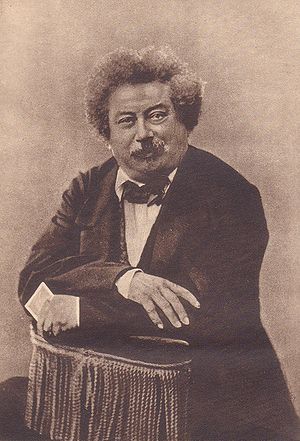
Alexandre Dumas, photo by Nadar. (Photo credit: Wikipedia)
2. Among the classics, "action and adventure" is a best-selling genre. Surprise, surprise. Alexandre Dumas' The Count of Montecristo ranked at 450! Incidentally, on the e-book offered on the Amazon site, the author's name is spelled "Duma" without the "s"! Incidentally duma is a word that exists, it is a Russian term for a representative assembly. I haven't read that particular e-book, but I suspect the text is awash with typos if they can't even get the author's name right... Lest you think that murder mysteries by a classic author can outstrip Dumas, here's Agatha Christie's ranking for her most "popular" novel (Amazon has a "popularity" ranking too), And Then They Were None: #23,540. Surprised? You thought Agatha Christie's books also (at least notionally) had action and adventure? Well, no. Not in Amazon's ranking world, that "special rankings" labyrinth...
3. Special rankings: a jungle to navigate! In addition to overall ranking in the "paid-in" Kindle Store, achieving ranking in a special category can suddenly make you look good: you may be well out in the ether in overall ranking, but a special category can bring you into the first one hundred! There's a hitch, though. Those categories seem to be as numerous as the keywords or "tags" used to described books on the Amazon site. Some are duplicates (what's the difference between "drama" and "tragedy"?) and many are simply not remotely relevant. Just a couple of examples to show you how crazy it can get: Carlos Ruiz Zafòn's The Shadow of the Wind is ranked #51 for the following category: "Education and Reference". Really, for a novel? And an atmospheric, unique novel such as this one?? And if you think I've dug up a glitch in the system just to be annoying, here's another one: Anne Tyler's The Accidental Tourist turns up as #78 for..."English as a foreign language"! Ok, the novel's protagonist is a guidebook author, but this is a novel, for Goodness' sake! And I'm sure you've come across some weird ones yourself, please share your findings in the comments!
What's the real use of ranking beyond the first one hundred? Bottom line, they are a mere reflection of current sales, but presumably they help readers find what other readers buy the most. The trouble is: the system feeds on itself - it's a vicious circle. The more you sell, well, the more you sell...The snowballing effect means people are used to buying stuff in the first one hundred, whether overall ranking or special ranking. And if your book is listed in neither, then it's tough, baby, but no matter how many good reviews you have, you won't cut it. No way. Which is why some people will use any means - including using all their friends and crowdsourcing techniques (see article below) - to kick their book into the hallowed hall of the top 100.
A fair way to do it? No. Will it work? Maybe. There's that snowballing effect...But here quality kicks in: if the product is no good, no one will buy it. Or they won't buy your next book. Yes, because you can always download a sample and that's what most people do to make sure they want to read it. And if the sample stinks, well, it's curtains!
That brings me to the other two marketing instruments that help "book discovery" on Amazon: customer reviews and "likes".
Customer reviews and "likes: that's something self-published authors work hard at: gathering as many reviews and "likes" as possible - some even try to get as many tags as they can, presumably to feed into the "special rankings". Then if they get one star reviews, they get desperate. Yet, one star reviews are meaningless: the best books get them. For example, James Patterson (yes, that one, the great Patterson) got 19 one star reviews (out of a total 90) for his best-selling I, Michael Bennett. That says it all.
Conversely, five star reviews are also (relatively) unimportant: an avalanche of compliments seems unrelated to the ranking and sales. For example, Anne Tyler for her top selling novel, The Beginner's Goodbye, got 123 reviews that averaged at 4.1 (out of 5) with only 2 one star reviews, yet her ranking is nothing to write home about: #28,280. And I can multiply the examples as I'm sure you can too.
Do reviews work as well as rankings in driving readers to a book? Who knows, but there is little doubt that a total lack of reviews is associated with a ranking way out there in the ether. Let's be clear on this: with no reviews and no "likes", your book is dead, gathering digital dust on its virtual shelf. But even here looking at how major authors fare brings some surprises. Just one comparison between two best-selling authors: Barry Unsworth who won the Booker Prize with his Sacred Hunger, got only 3 reviews for that book (average: 4.3) and 2 "likes" and ranks at a modest #18,731. Ian McEwan, with his best-selling Amsterdam got 47 reviews (average 4.2) and 2 "likes", but is relegated to a whoppingly high #111,109.
Makes no sense at all. And if you look at "likes", the story is even more surprising. Take Aaron Patterson, a writer whose books fall into the James Patterson "kindle book list". By the way, that's something self-published authors try to do again and again: get themselves listed along with a major author famous for producting blockbusters. If you look at the James Patterson list there are 483 results (yes, that much - but then James Patterson is notoriously prolific himself). Aaron Patterson clocks in at ...#1 on that list, ahead of James Patterson himself! How did he do it? Did he benefit from the similarity in his name? Maybe, but it's more likely that he worked very hard at marketing. Whatever he did, he got 74 reviews for his book Sweet Dreams, averaging 3.7 (better than James Patterson's 2.8 for the above mentioned I, Michael Bennett) and obtained a whopping 207 "likes" (as opposed to James Patterson's 4). Did all this effort put him in the top 100 in paid-in Kindle? Nope. He's at #1,289 - a lot better than the master, but still...The real reason he beat the master, I suspect, is price: his book costs $ 4,02 as against $ 12,76 for James Patterson's (prices quoted here are those on Amazon for Europe - higher than in the US).
There is little doubt that the e-book market is a world on its own. Classics available in paperback or used editions are often cheaper than e-books and have been reviewed more often but this does not seem to translate into better Kindle ranking or more digital sales.
You can engage in what is considered all the "right" steps: numerous reviews including professional ones in trade magazines, a smashing book trailer, many "likes" and classification in several "special rankings", but all that effort still won't get you into the hallowed top 100 in paid-in Kindle. A recent example comes to mind that perfectly illustrates what I mean. Take Adriana Trigiani's The Shoemaker's wife, just out in April 2012, published by HarperCollins. Of course, being trad-published, it's priced very high: $15.22. But it still managed to get 170 reviews (plus a few professional ones) averaging a respectable 4.3 (that includes 3 one star reviews), an excellent book trailer, 74 "likes", and good ranking in special categories (#7 in "domestic life" and #8 in "family saga"). Yet it didn't make it into the hallowed top 100: it stands at 340. Respectable given the high price, but not quite good enough.
Now, how would have Adriana Trigiani's novel fared if it hadn't been hampered by such a high price? Extemely well I should think...Because, as of now, the top 100 is populated by books that are in the low range of 99 cents to $5.99 (with a few exceptions of course). So price trumps everything else...for the time being. I do wonder what will happen once the traditional publishers realize that the e-book market is insulated from their printed book world and that they can behave just as self-published authors have: reap the benefits of pricing e-books in the low price range and watch the sales clock up!
Because conventional wisdom tells us you need everything to make it work: an attractive low price, lots of customer reviews including professional reviews, many "likes", a good book trailer, and last but not least social networking to spread the word. And then some excellent books still don't make it. Go figure...
Still, that leaves one with a doubt. Could it be that Amazon by ranking your books is killing your sales? Once you're beyond the #100,000 range, it doesn't look good. Readers who like to follow the crowd draw conclusions from such things...
Also, what's the use of "special rankings"? Some make sense, like "family saga" or "action and adventure". Others don't. Wouldn't it be better to clear up the mess (probably created by automatic computerized adding up of tags)? Because if categories were clear (even if numerous), they would surely help in book discovery. If you like "action and adventure", there's no doubt about what it is, you go look for it. A category such as "education and reference" applied to a novel surely doesn't help!
What's your opinion? Should Amazon review its special rankings and desist from ranking books beyond the 100,000th rank?
* I am not including here the table I used because it takes too much space (though I can send it to anyone interested), but my methodology is the following:
1. Items checked for every author and title: price, #reviews, average stars, #likes, special rankings, Paid-in Kindle Store ranking
2. The investigation eschewed the top 100 in Paid-in Kindle Store and focused on well-known writers and how they are doing in the Kindle Store, including the "drip-down" effect they are having on self-published authors (for example, Karen McQuestion, an Anne Tyler-alike, easily outranks her master).
Related articles
 Free Kindle Promotions - An Interview With Terry Tyler
Free Kindle Promotions - An Interview With Terry Tyler Link of the Week - NovelRank
Link of the Week - NovelRank Make Amazon Your Personal Publicist Using Their Book Category System
Make Amazon Your Personal Publicist Using Their Book Category System Score!!!
Score!!! Amazon: Pricey Best Sellers Breakdown
Amazon: Pricey Best Sellers Breakdown How To Find Out How Much Any Author Is Selling
How To Find Out How Much Any Author Is Selling Watch: The Amazing Trailer For 'Anna Karenina'
Watch: The Amazing Trailer For 'Anna Karenina' Help An Unknown Author Reach The Amazon Top 100 - #Top100Challenge
Help An Unknown Author Reach The Amazon Top 100 - #Top100Challenge Killing Agatha
Killing Agatha Why social media isn't the magic bullet for self-epublished authors
Why social media isn't the magic bullet for self-epublished authors

Published on August 01, 2012 06:05
July 26, 2012
Europe R.I.P: The Germans Killed You!
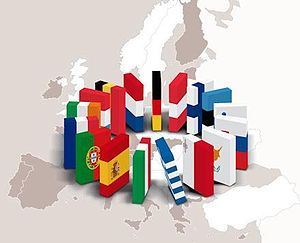
Graphic "When Greece falls" presented by Dutch government on 21 June 2011, speaking of European sovereign debt crisis (Photo credit: Wikipedia)
Germany tried three times to destroy Europe: the first was in 1870 when they entered Paris. They tried again in the First and Second World War. And now it looks like they'll make it! Indeed, they talk about Grexit - the exit of Greece out of the Eurozone - as something to look forward to. They're damned if they're going to bail out Southern Europe. The Spaniards, the Italians are lazy profligates and deserve all that's happening to them.
The Germans have confidence in themselves. They've made it, the others haven't and they can go get lost. Will Germany pay up in the end in order to avoid Euro collapse? Some believe they will, spurred on by a feeling of guilt (see historian Marcus Ferrar's article below).
I used to think they would see the light and pay up. I no longer think so. Okay, I'm very pessimistic but the signs are there. Germans have become exceedingly full of themselves. When Moody's lowered its outlook for Germany, putting government debt under negative watch on Monday last, that didn't really bother them, they hardly took notice. Investors continue to accept negative rates on German bonds, so why should they bother? Moreover, the economic outlook for next year isn't (yet) negative, a more modest growth (1%?) but still growth...
This overconfidence could be the downfall of Europe. Why? Because the German authorities, starting with the Bundesbank, are not serious about how to handle the Euro crisis. They seem to think that it is a good strategy to pull the oars in, refusing to increase bailout funding and tell the others to tighten their belt. Toe the line of fiscal discipline or else, raus!
But is Germany really immune to a downfall of the Euro? Can it survive the collapse of European markets for its exports? Does it really think that it's enough to sell to China, India and the US to survive the Euro crisis? Moody's begs to differ and for once, it may be onto something. Yesterday it lowered the outlook on 17 German banks, hitting the landsbanks in particular (the state-backed regional banks) that have been suffering since the 2008 crisis. The motivation? No one's immune from contagion, and the cost of bailouts might be too great for Germany to bear...
This is a warning that Germany would do well to heed. Time is running out on the Euro and while a fiscal union is the right solution, the problem is that it is a long-term solution. It can't happen overnight, there are too many political obstacles to surmount. So what is needed in the meantime to keep the Euro afloat, is a quick financial fix. It doesn't matter whether you resort to "quantitative easing" from the European Central Bank, or "eurobonds" backed by Eurozone governments, Germany included. But something needs to be done fast!
Alternatively, Greece will exit the Euro, Spain and Italy will sink under their debt load and no bailout mechanism can keep them afloat. In short, the Euro collapses along with the whole of Europe, Germany included. A return to national currencies may help some countries, but one thing is certain, it won't help Germany that will see its Deutschmark rise and become the most expensive currency in Europe. Good-bye exports!
Is that what Germany wants?
Here are some of the more interesting Related articles:
 Survey: German consumer confidence stable
Survey: German consumer confidence stable German domination of Europe? No chance. They'll pay up.
German domination of Europe? No chance. They'll pay up. Europe's True Crisis
Europe's True Crisis After The Downgrade: German Stocks Or Bonds?
After The Downgrade: German Stocks Or Bonds? Moody's lowers outlook for 17 German banks
Moody's lowers outlook for 17 German banks Worse Euro Crisis Needed for Germany to Yield: Tom Keene - Bloomberg
Worse Euro Crisis Needed for Germany to Yield: Tom Keene - Bloomberg ECONOMISTS: 'Europe Is Sleepwalking Toward A Disaster Of Incalculable Proportions'
ECONOMISTS: 'Europe Is Sleepwalking Toward A Disaster Of Incalculable Proportions' Ifo Warns on German Business Confidence
Ifo Warns on German Business Confidence

Published on July 26, 2012 03:47
July 25, 2012
Retired People of the World, Unite!
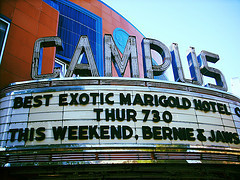
Campus Theater (Photo credit: Gerry Dincher)
Are marketing gurus waking up to new markets out there? Have they (finally) realized that the Baby Boomers are about to retire - nay, that they're retiring? It's going to be a tsunami of consumers over 60. And that will change the marketing game forever.
So far, products were sold with pretty pictures of youth. Now we'll get your grandmother selling you a red hot Ferrari, I can just picture her wiggling out of the racing car (or running away?). Ah, no matter, the name of the game is Baby Boomer Buying!
At least that's what AARP and their magazine think - and what they think does matter, after all the magazine sells to over 22 million readers! That makes it the biggest magazine in America (and perhaps the world). As Andrew Newman of the New York Times recently pointed out (see article below), they've launched a new campaign aimed at advertisers that features people in their
50s and early 60s, arguing that "brands should be focusing on them,
not people ages 18 to 34, commonly referred to by the marketers who
covet them as millennials."
Indeed. Advertising has traditionally focused on the young and that was a very good strategy when the Baby Boomers were young back in the 60s and 70s. Now they're old, and the numbers should speak to marketeers: as of now, they're some 75 million of them in the United States alone and the numbers are growing. Also population is aging everywhere, Japan in particular but also in China (where by 2040 there will be many more retired people than active workers).
The numbers have clearly spoken to Hollywood. It is trying to get boomers back in the movie theatre, producing films to their taste like “True Grit,” “The King’s Speech,” “The Fighter,” “Black Swan”, “The Social Network”. They have all been "surprise hits" at the box office and reaping Oscars. Wow! So selling to Baby Boomers does work! As the New York Times put it in an article reviewing this developing trend in movies (25 Feb 2011), they have become hits “based on wit and storytelling, not special effects”.
Gone is the pointless gore and violence and wild, unrealistic flings of fancy. What a relief! As far as I'm concerned (but then yes, I'm a Baby Boomer), I'm totally fed up with wild pursuits through improbable settings, sprays of ketchup blood and the deafening sound of gunfire and explosions.
Remarkably, people are getting used to seeing old faces. Films featuring old actors are making it to top rankings in the box office: Judi Dench and Maggie Smith (both 76), Helen Mirren (65), Sylvester Stallone (64), Liam Neeson (58), just to name a few. But I'm sure you can think of many more. For example, French actors like Gérard Depardieu or Alain Delon.

LONDON, ENGLAND - FEBRUARY 07: (EDITORS NOTE: Image has been converted to black and white) Dame Judi Dench attends the World Premiere of 'The Best Exotic Marigold Hotel' at The Curzon Mayfair on February 7, 2012 in London, England. (Image credit: Getty Images via @daylife)
What is striking is the change in plots. For the first time, movies are squarely focussed on the retired and aging. For example, “RED”, a hit in 2010, stands for “retired and extremely dangerous” and the current hit “The Best Exotic Marigold Hotel,” is about a group of British retirees who go to India (Fox Searchlight).
The exploding growth of Facebook and Twitter is largely the result of a surge in adoption by older people: a recent US poll (Pew Research Center’s
Internet & American Life Project, Feb 2011) shows that the share of
Americans older than 50 using social networks doubled in 2010, with a
virtual majority of baby boomers, and about one-quarter of the nation’s
seniors, now using the sites to stay in touch or reconnect with
long-lost friends.
The media is catching up (not just AARP for whom Baby Boomer retirees are at the center of its mandate). Since March 2011, the New York Times has tried to launch a free quarterly magazine and associate website called "Your Guide to Better Living" aimed at Baby Boomers. As far as I can figure out, it's not online yet or at least not visible to the average Google navigator - which goes to show that it's not easy to market to Baby Boomers. This is something that Chuck Nyren points out in his excellent article: a marketing campaign works if it promotes a product that is NOT age-related. Why? Probably because we all like to look hip. It's a left-over of the Baby Boomer heredity. We can't get excited about ashen faces, hearing aids and walking sticks.
The same is true for literature. Novels with the aging and retired as protagonists are on the rise - what I like to call BB novels (for Baby Boomers just like YA novels are for Young Adults). That's precisely what my next novel, A HOOK IN THE SKY, is about. But if BB novels are going to be sad, tragic stories about wrinkles and back aches, you can bet no one will want to read them!
A good BB novel is one that makes you smile, that let's you get in the head of older people and understand them. Empathy is the key word here. We'll all get there some day, old and bent, but it need not be a drama. No, there can be good things about growing old, it's just a matter of looking for them. I think that's what that Deborah Moggach's novel, The Best Exotic Marigold Hotel, really does: it exorcises the fear of Death, it tells you how to handle age with grace and dignity and it makes it sound (at last!) like good fun! A skilful black comedy, it's a great read, I highly recommend it.
It's everything a BB novel should be. And I'm not surprised it's such a roaring success - and the film too. It's BB times coming up!
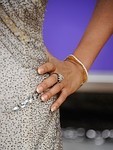
NEW YORK, NY - APRIL 23: A detail of actress Pooja Kumar's ring and bracelet is seen at the 'The Best Exotic Marigold Hotel' New York Premiere at Ziegfeld Theatre on April 23, 2012 in New York City. (Image credit: Getty Images via @daylife)
Related articles
 Baby Boomer Retirement - The Potential Impact on Valuations
Baby Boomer Retirement - The Potential Impact on Valuations Baby boomers 'driving cosmetic surgery increase'
Baby boomers 'driving cosmetic surgery increase' Daily Baby Boomer News Update: July 24, 2012
Daily Baby Boomer News Update: July 24, 2012 Grey Divorce A Growing Trend Among Baby Boomers
Grey Divorce A Growing Trend Among Baby Boomers The impact of baby boomers on the housing market.
The impact of baby boomers on the housing market. Baby Boomers Screwing Younger Workers, Private Sector Edition
Baby Boomers Screwing Younger Workers, Private Sector Edition Picking On The Big Boys & Girls, Part I: AARP
Picking On The Big Boys & Girls, Part I: AARP The never-ending challenge of trying to reach 75-million baby boomers
The never-ending challenge of trying to reach 75-million baby boomers Advertising: AARP Campaign Tries to Persuade Advertisers
Advertising: AARP Campaign Tries to Persuade Advertisers

Published on July 25, 2012 01:45



